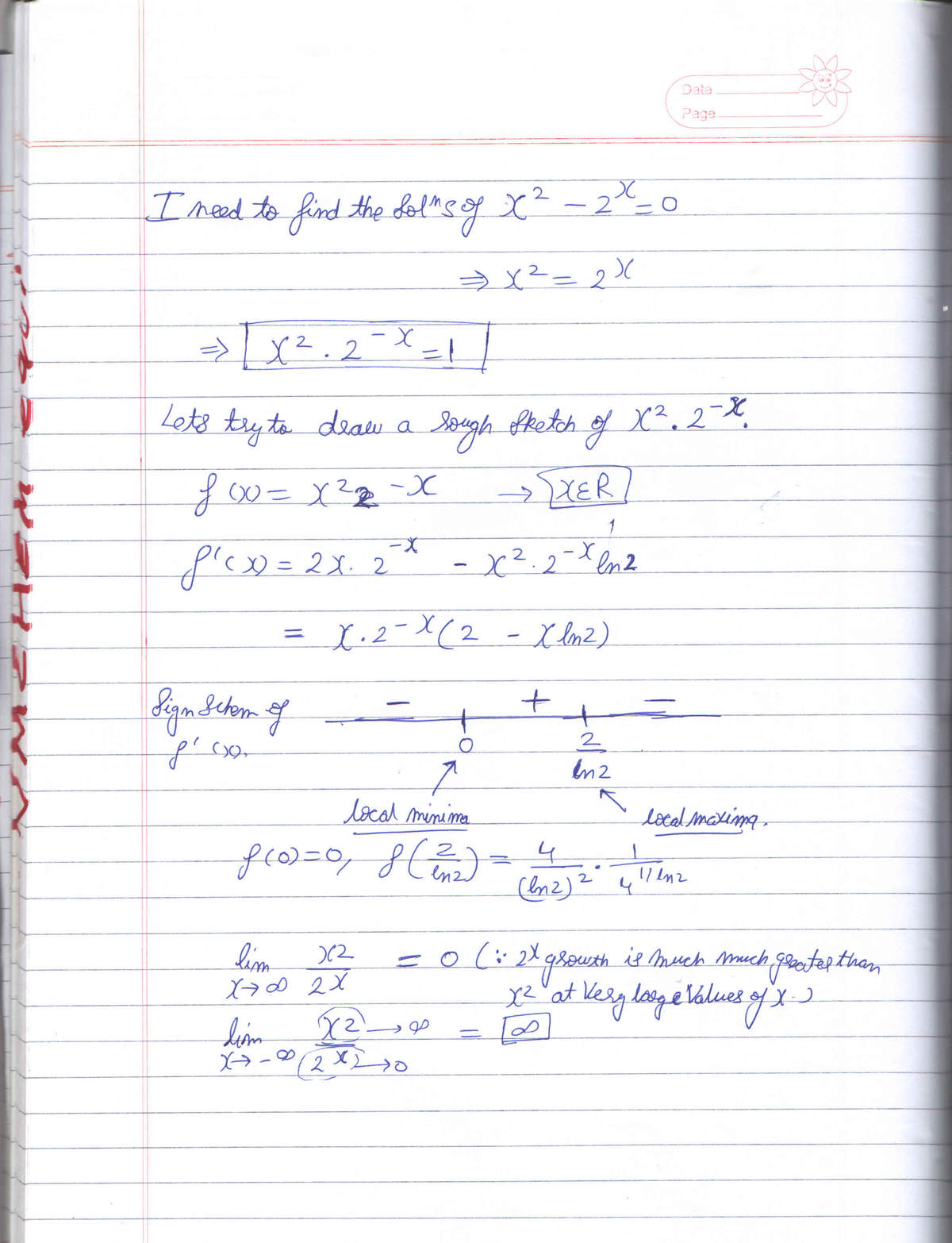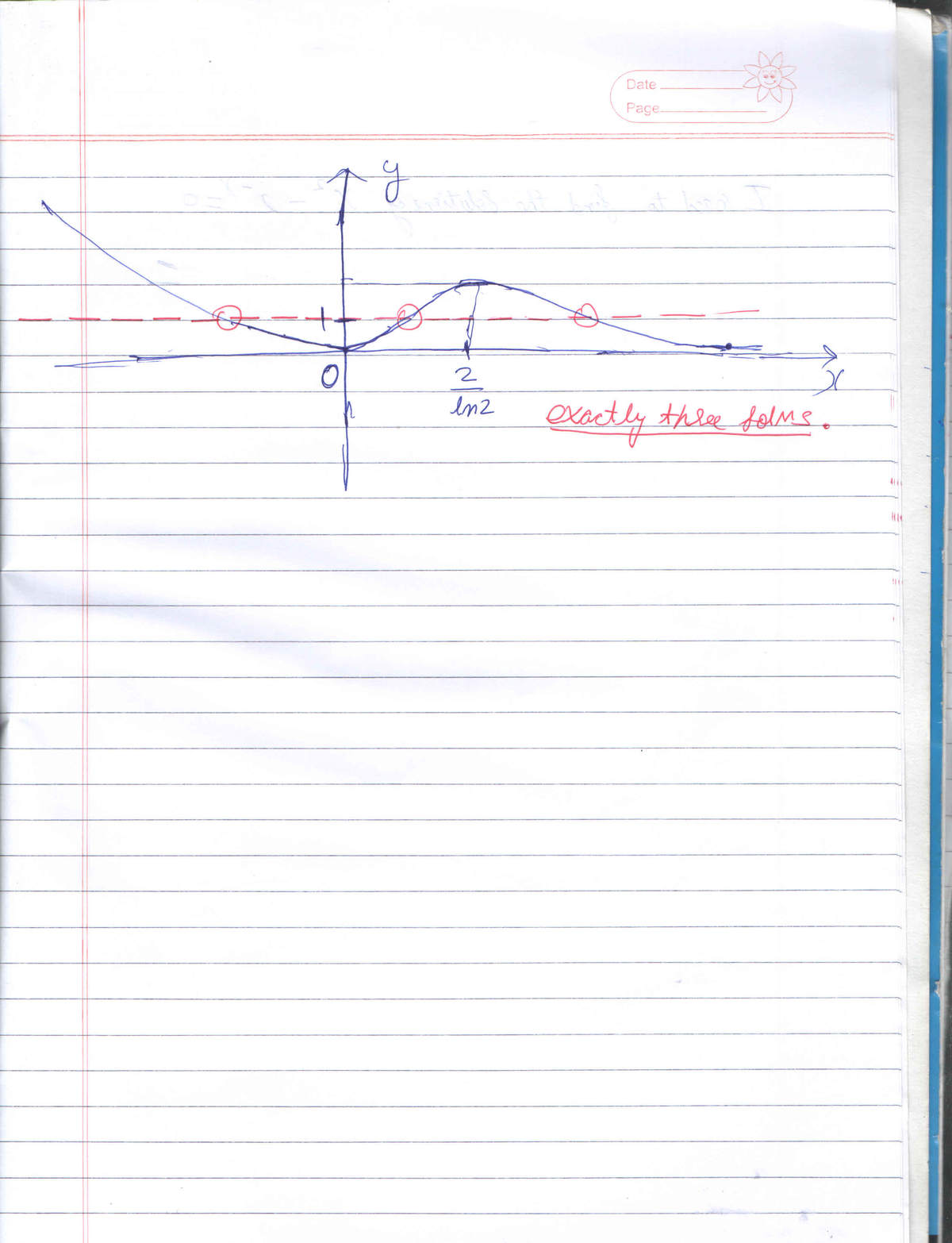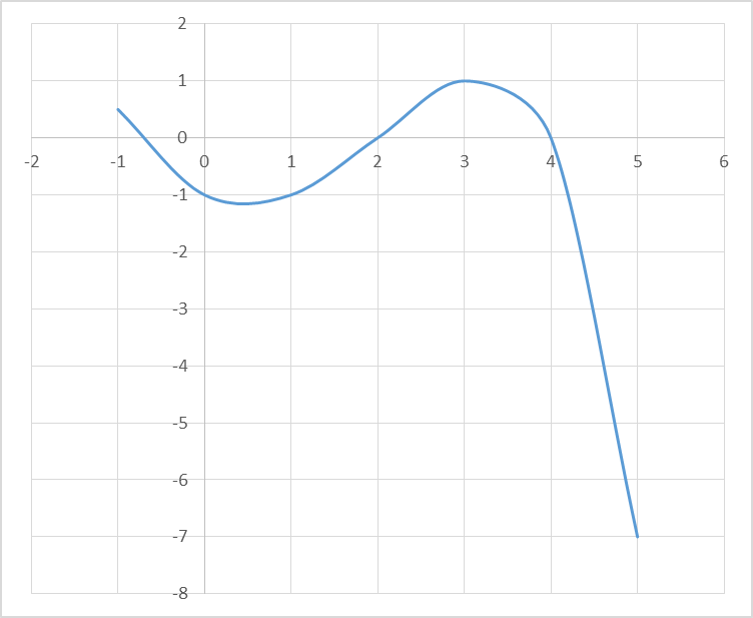This section requires Javascript.
You are seeing this because something didn't load right. We suggest you, (a) try
refreshing the page, (b) enabling javascript if it is disabled on your browser and,
finally, (c)
loading the
non-javascript version of this page
. We're sorry about the hassle.
5 solutions
How will we sketch the graph every time?
Log in to reply
by your hand
You just have to draw a rough plot which isn't too tough if you know some basic ones like logarithmic, polynomial or exponential etc.
Mostly with WolframAlpha.com :-)
amazing i did by sme wy by making the sketch of both functions and checking where the curve of both intersect
Even more common mistake is to think about one intersection in negative area and one - in positive :-)
what is the numerical value of the third solution?
Level is of eleventh and twelfth std. I am in ninth only!
i think when x = 0 --> it becomes 0 0 it means it is undefined
Log in to reply
When x = 0 , we have 0 2 = 2 0 ⇒ 0 = 1 , which is obviously false so x = 0 does not satisfy the equation. But the equation is not x x so we don't need to worry about 0 0 .
As x tends towards − ∞ , x 2 tends towards ∞ and 2 x tends towards 0 . So x 2 > 2 x for sufficiently large negative x . As x tends towards + ∞ , both functions tend towards ∞ , but 2 x grows at a faster rate. x → ∞ lim x 2 2 x = x → ∞ lim 2 x ln 2 × 2 x = x → ∞ lim 2 ( ln 2 ) 2 × 2 x = ∞ So 2 x > x 2 for sufficiently large positive x .
This means that the graphs of y = 2 x and y = x 2 cross 1 + 2 k times for some integer k , unless the graphs are tangent to each other at any points (some elementary calculus tells us that they are not). We already know of the solutions x = 2 and x = 4 , so there must be at least one more to make the number of solutions an odd number.
The graph of y = x 2 is concave up and decreasing when x < 0 . Thus, if there exists an x -value n < 0 where 2 n < n 2 locally to the left of n and 2 n > n 2 locally to the right of n , then this solution is the minimum solution. We see that at x = 0 , 2 x = 1 and x 2 = 0 , and that at x = − 1 , x 2 = 1 and 2 x = 2 1 , so by the Intermediate Value Theorem, there exists a solution in ( − 1 , 0 ) . This is our third solution.
Moderator note:
The crux is indeed to look at slope and convexity. However, you should make that argument more explicit.
listen you just said that 3 solutions do exist can u prove third one ?? beacuse i know lready that 2,4 arethe solutions
Log in to reply
@hoor ulain Take f ( x ) = 2 x − x 2 . Then f ( − 1 ) = − 2 1 and f ( 0 ) = 1 . By the Intermediate Value Theorem, there is a root between x = − 1 and x = 0 .
Log in to reply
INTERMEDIATE value theorem??? howww can apply here ???
Log in to reply
@Hoor Ulain – Since f ( x ) = 2 x − x 2 is the sum of an exponential function ( 2 x ) and a polynomial ( − x 2 ) , f ( x ) is continuous on its domain of ( − ∞ , ∞ ) .
In general, the Intermediate Value Theorem states that if f ( x ) is continuous on [ a , b ] and n ∈ ( f ( a ) , f ( b ) ) , then there exists a c ∈ ( a , b ) such that f ( c ) = n .
Since f ( x ) meets the criteria for IVT, we can apply it at any points we want (such as between x = − 1 and x = 0 , as I did).
 another method
another method
The above is used to draw a rough sketch of f(x) that is shown below :-
from calculator we can see that f(2/ln2) >1
and draw y=1 line to see that it cuts f(x) at exactly 3 points
 graph
graph

Simply plot a graph for the given equation and see at how many places does the plot cross the x-axis (ie ordinate is zero)
X^2 = 2^X or 2 ln(X) = X ln(2) If X=2k then 2 (ln2k) = 2k ln(2) or 2 k ln(2) = 2^k ln(2), cancelling ln(2) yields 2 k = 2^k which is valid for k=1 and k=2 which yields X=2^1 =2 and X = 2^2 = 4 for X>0
At X>4, 2^X is greater than X^2, both will approach infinity.
At 2<X<4, X^2 is greater than or above 2^X.
At 0<X<2, X^2 is less than or below 2^X.
For X<0, X^2 will increase to infinity while 2^X will approach 0 asymptotically so 2^X will again intersect X^2 at a point and be less than or fall below X^2 at some point in X<0 which may be solved numerically or graphically as X=-0.766665.
Thus there are three (3) real solutions for X^2=2^X, two positive and one negative.
x 2 − 2 x = 0 ⇔ x 2 = 2 x
A common mistake is to think there are only one or two solutions ( x = 2 , 4 ). However we see there is a third solution by sketching the graphs y = x 2 and y = 2 x on the same axes.
At x = 0 , x 2 = 0 and 2 x = 1 ⇒ x 2 < 2 x .
At x = − 1 , x 2 = 1 and 2 x = 2 1 ⇒ x 2 > 2 x .
As both graphs are continuous, they must cross over each other in the interval ( − 1 , 0 ) , and we find the third and final solution there.